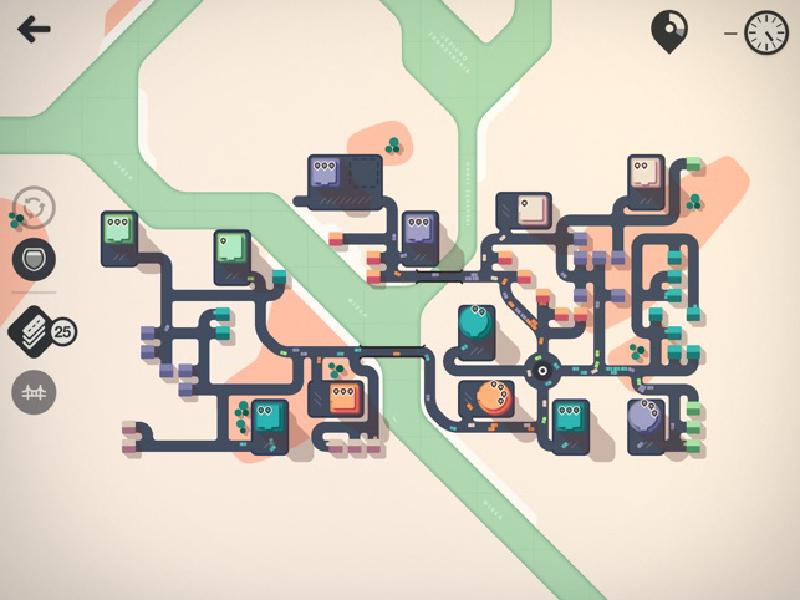Platform
Game Objective
Don’t fantasize about completing levels perfectly; the ultimate goal of the game is that cars will inevitably fail to reach the mall. Therefore, use your own strategy to get as many cars to the mall as possible and compare the number of cars with players worldwide.
Strategy Tips
Start by Rolling a Good Position
The maps in Mini Motorways are fixed, but the starting positions in each game are random. You can repeatedly restart to roll a more advantageous terrain. The principles are:
- Stay away from the edges of the map;
- Avoid rivers and mountains;
- The closer the starting stations and buildings are, the better (this way, one or two stations can independently supply a building for a long time).
Never Take Red! Green! Lights!
Compared to highways or more road segments, the cost-effectiveness of traffic lights is too low. When traffic is light, intersections can flow smoothly without traffic lights; when traffic is heavy, intersections with traffic lights can still get congested. Therefore, traffic lights are of limited use in improving traffic conditions in this game. It is not recommended to take traffic lights during weekly funding.
Traffic lights are ineffective tools: they almost always cause traffic jams. Try playing an entire game without using traffic lights; it will lead to new progress.
The order in which I take items is:
Highway>Tunnel/Bridge (if needed)>Regular road
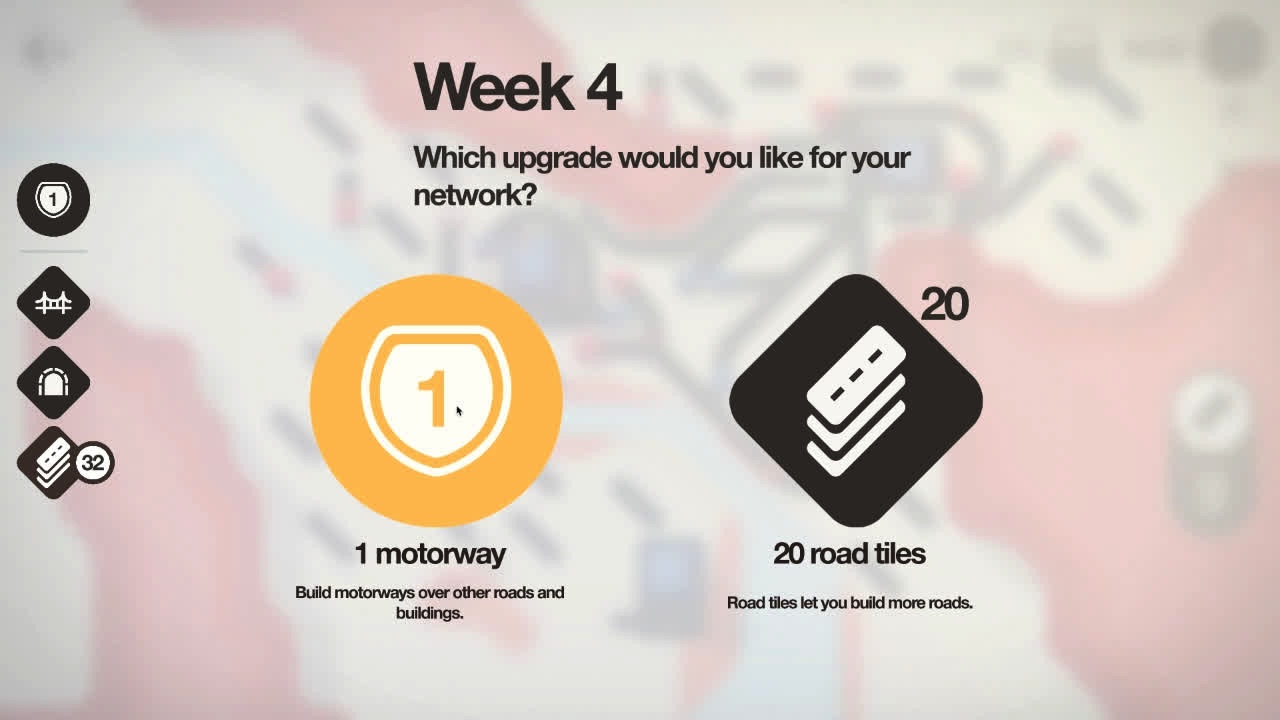
Choose Detours Instead of Intersections Whenever Possible
This is a route planning game, so an effective strategy is to connect stations and buildings of the same color together while avoiding intersections with roads of other colors! Sometimes road crossings are unavoidable; in such cases, choose to build intersections in areas with as little traffic as possible, rather than placing them on main roads!
Do not mix cars of different colors on the same road, as this will cause congestion.
Seal Off Randomly Appearing Buildings by Building Diagonal Roads
This technique is something I figured out myself, but it is indeed very effective. The principle is shown in the image below:
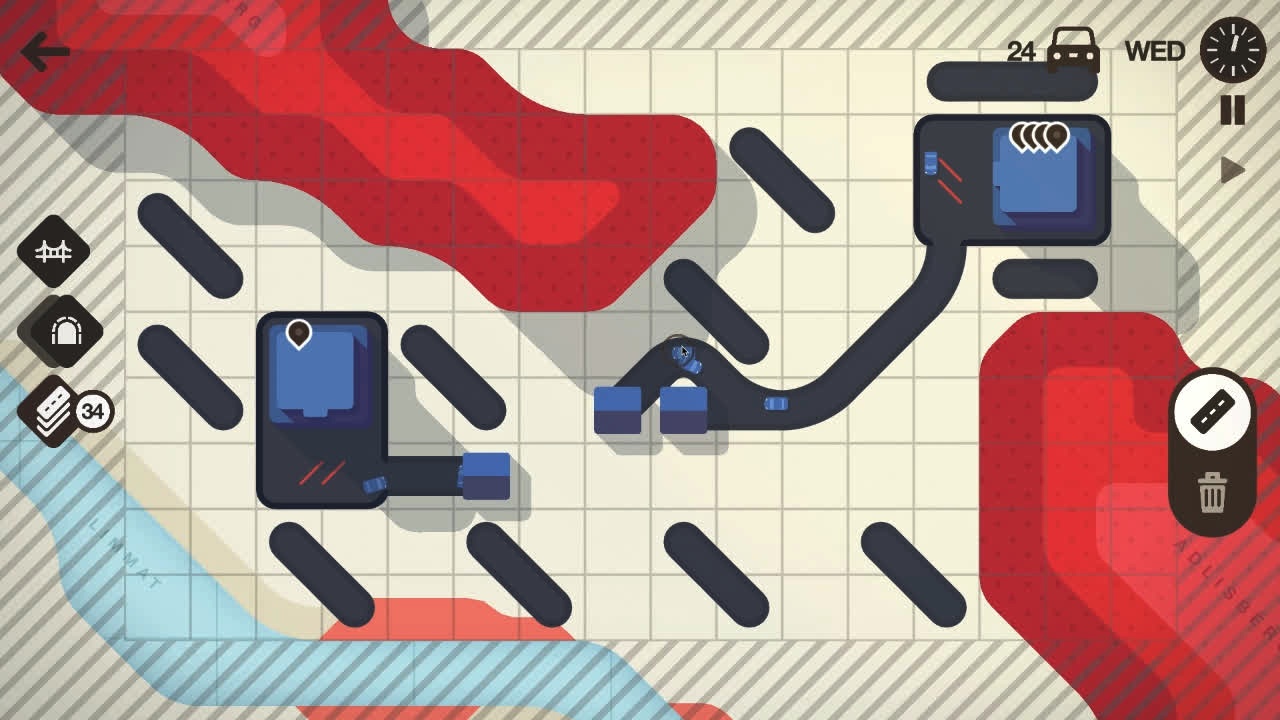
What frustrates players the most in Mini Motorways? Just when you’ve built a perfect, smooth, elegant, and non-congested road, the system randomly generates another building of a different color right next to your connected building, with an exit that makes you want to vomit! Anyone who has played this game understands this pain.
To prevent randomly generated buildings from appearing in various annoying and inconvenient locations, I devised a method called “diagonal road sealing,” to avoid buildings appearing next to existing structures or in places I don’t want them to appear. After using this method, I no longer have to be frustrated by the positions of various annoying buildings!
However, this approach requires taking a significant number of road segments in the early stages. So, in the first few weeks, I generally focus on acquiring road segments to ensure a supply for my sealing roads.
Be Cautious When Choosing Highway Locations! Don’t Dismantle Easily!
This is a mistake I often make, as I am used to dismantling regular roads. Sometimes, after just building a highway, if I’m not satisfied, I might casually drag and dismantle it. This behavior may be acceptable in the early stages, but it is very dangerous in the mid to late game!
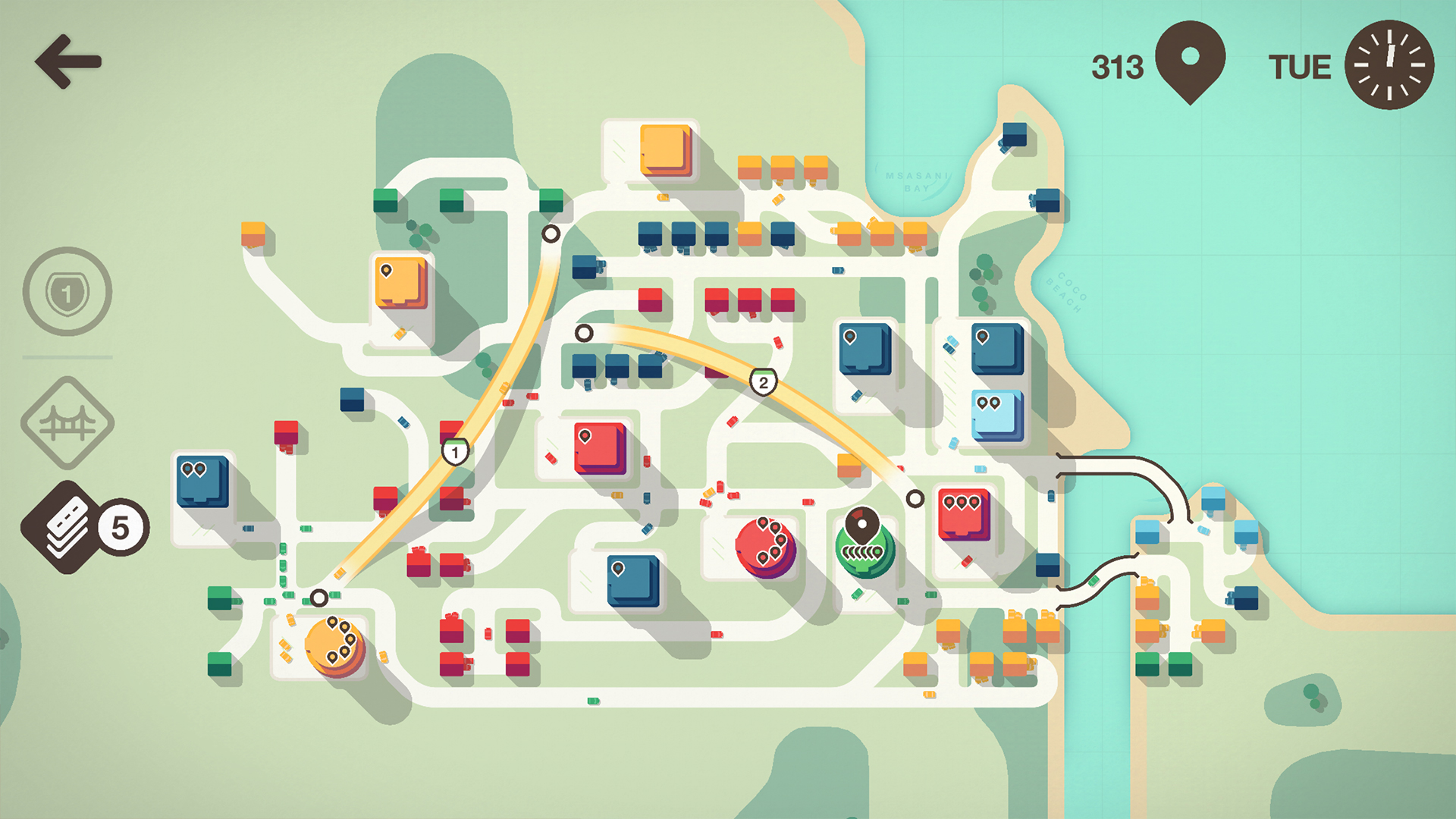
When dismantling a highway, the highway will only be reclaimed after all vehicles have finished using it!
The reason is that the dismantling mechanism in Mini Motorways works like this: once you click to dismantle, the road no longer exists for cars that haven’t yet entered the road. However, the resources from the highway and road segments will only be reclaimed after all vehicles that have entered the road have finished using it!
In other words, if a green vehicle departs to pick up a passenger just one second before you dismantle the highway (as shown in the image above), the resources from the highway and road segments will not return to you during the time it takes for that vehicle to complete its trip and return. Due to the lack of resources, it is generally impossible to immediately build a backup highway connection, which will leave the previously connected area without highway access for a long time. This is particularly fatal for the dynamically balanced road network structure, which is especially fragile in the later stages. I have often failed due to attempting to replan highways in the late game with this misguided approach.
For Certain Maps (Tokyo), Completely Seal Off Islands with Road Segments
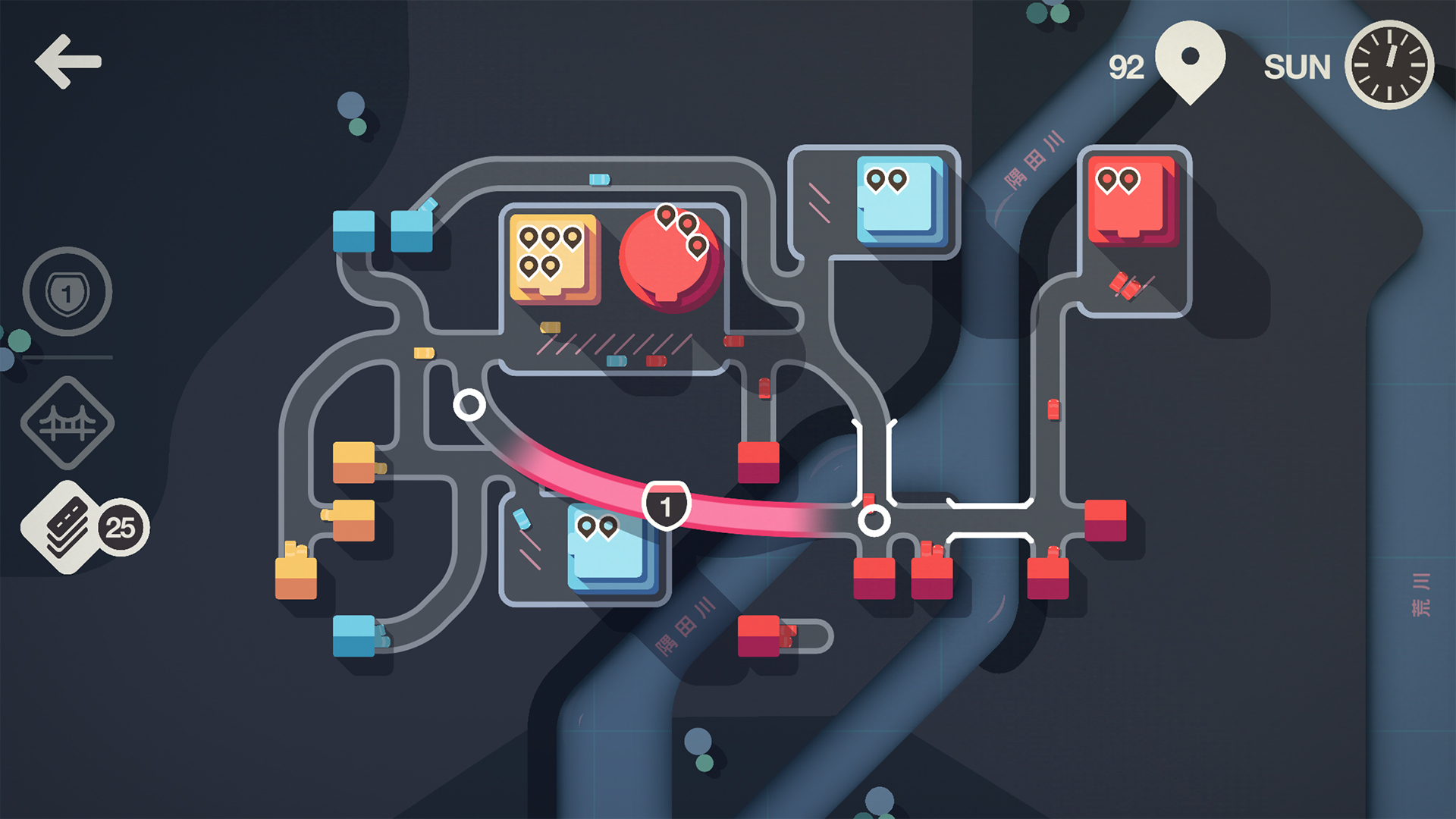
The most annoying aspect of Tokyo is the central island. Once a station or building appears there, it’s basically game over, as you must acquire enough bridges, which leads to a shortage of other resources.
My chosen strategy is to start far from this island and stockpile road segments in the early game. Once the map expands enough to build on the island, I use surplus road segments to completely seal (cover) the entire island. This way, the whole map becomes much simpler.
Not All Small Houses Need to Be Connected to Roads
Sometimes small houses are given unnecessarily; if their positions are poor, you can ignore them to avoid congestion.
Cars Will Always Take the Shortest Route
Therefore, you only need to plan the shortest routes for them. Initially, I thought cars would divert, for example, if the short route is congested, they would take the longer route. However, as the city becomes more complex, building two accessible roads for cars is ineffective!
Avoid Intersection Speed Penalties
Car Exit Logic
- Cars that correspond to a house will return to the same house.
- If you dismantle the road leading to the corresponding house midway, the road will only disappear when both cars have returned to the house.
- Cars exiting the house have the highest priority; if they block cars on the road, the road cars will slow down to wait for them.
- If the roads are not connected to four houses in the same grid, cars will drive back at maximum speed, even if it’s a sharp angle without slowing down.
The fourth point is quite strange. If you’ve played Mini Metro, you know that subway trains stop at sharp angles because Mini Motorways has a mechanism called crossing penalty. This means that cars must stop at intersections to check before proceeding. In the same situation, if one road has a slight deviation, which one is faster?
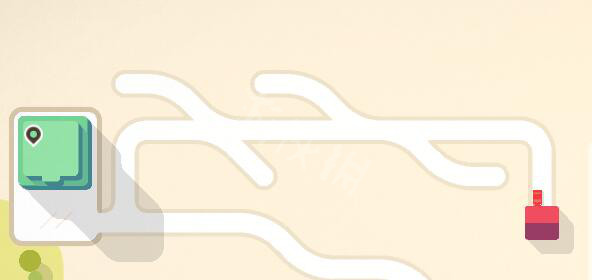
The answer is the slightly skewed intersection on the right because the previous intersection connects to four roads, causing a crossing penalty that slows down vehicles.
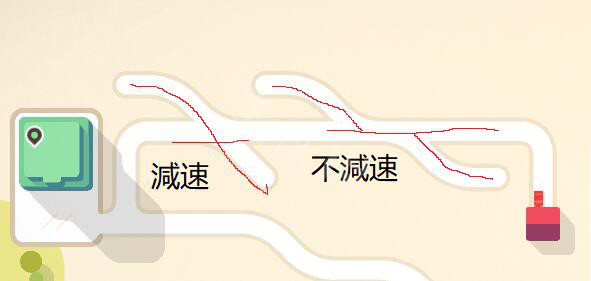
Any shape of intersection, as long as the connecting roads are four or more, drivers will slow down and then accelerate, wasting about double the time.
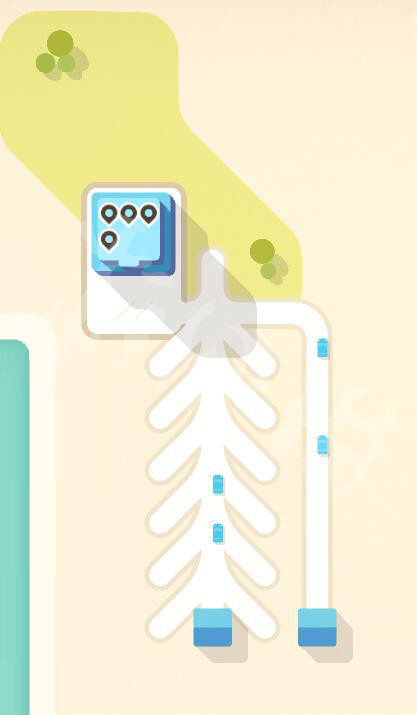
I believe this mechanism is designed to simulate the behavior of stopping and looking both ways at intersections, but at three-way intersections, cars just accelerate through.
Methods to Avoid Intersection Speed Penalties
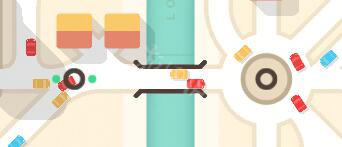
| Method | Description |
|---|---|
| Traffic Lights | Although they seem very useless, cars will pass through at full speed when the light is green. |
| Roundabouts | Cars will pass through without slowing down. |
| Avoid Intersections | Cars will stop at intersections to check before proceeding. |
Reference
- 迷你公路(Mini Motorways)高分技巧与攻略
- 【技巧攻略】Mini Motorways 輕鬆突破千分大關 - 電玩安安 ACGaming - Medium
- Mini Motorways - Dinosaur Polo Club
- [230k+] World Record on 8/8/21 LA Mini Motorways Daily Challenge (sheeeeeesh) - YouTube
- Another Great Score on New York in Mini Motorways! (Top 400 World) - YouTube
- Mini Motorways Los Angeles 6000+ Points! (Top 1%) - YouTube
- Scoring High on one of the Hardest Maps in Mini Motorways! (Mumbai 3000+) - YouTube
- [Mini Motorways] 미니모터웨이 베이징 4102점 (Beijīng high score -4102) - YouTube
- The Road to 2500+ Trips on All Maps - Mini Motorways Stream Day!!!! - YouTube
